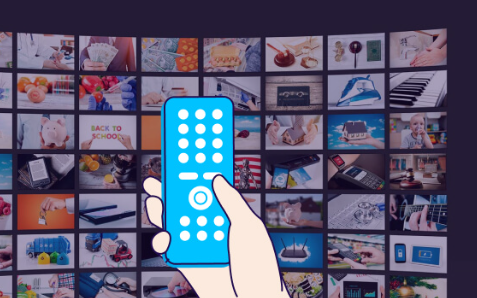MVPD vs vMVPD: Traditional vs Virtual TV Explained

The television industry has undergone a seismic shift in recent years, moving from traditional cable and satellite services to a digital-first landscape. At the heart of this transformation are Multichannel Video Programming Distributors (MVPDs) and virtual Multichannel Video Programming Distributors (vMVPDs). These two models represent distinct approaches to delivering television content, each with its own infrastructure, user experience, and implications for consumers and the industry. Understanding the differences between MVPDs and vMVPDs is essential for grasping how media consumption has evolved and what the future might hold for television.
The Foundations of MVPDs
Multichannel Video Programming Distributors, or MVPDs, are the traditional powerhouses of television delivery. These services, often provided by cable or satellite companies, have long been the backbone of home entertainment. MVPDs deliver a bundle of television channels to subscribers through dedicated infrastructure, such as coaxial cables, fiber-optic lines, or satellite dishes. Major players in this space include Comcast, DirecTV, and Dish Network, which have historically dominated the pay-TV market.
The MVPD model is built on a subscription-based system, where customers pay a monthly fee for access to a package of channels. These packages often include local broadcast stations, cable networks, and premium channels like HBO or Showtime. The hallmark of MVPDs is their reliance on physical infrastructure, which requires significant investment in hardware, installation, and maintenance. This infrastructure ensures reliable delivery of high-quality video but also ties subscribers to specific geographic regions and often necessitates professional installation.
One defining feature of MVPDs is their ability to offer a wide range of services beyond television, such as internet and phone bundles. This convergence of services has been a key selling point, allowing providers to offer “triple-play” packages that combine TV, internet, and voice services. However, the traditional MVPD model has faced criticism for its rigidity, with consumers often paying for large channel bundles that include content they rarely watch.
See Also: Technology in Commercial Cleaning: Innovations Shaping the Industry
The Rise of vMVPDs
Virtual Multichannel Video Programming Distributors, or vMVPDs, represent the next generation of television delivery. Unlike their traditional counterparts, vMVPDs operate entirely over the internet, delivering live TV and on-demand content through streaming platforms. Services like YouTube TV, Hulu + Live TV, and Sling TV have become synonymous with this model, offering viewers a cable-like experience without the need for physical infrastructure.
The vMVPD model leverages broadband internet connections to stream content directly to devices such as smartphones, tablets, smart TVs, and streaming media players. This approach eliminates the need for cable boxes or satellite dishes, making vMVPDs more flexible and accessible. Subscribers can sign up online, often with no long-term contracts, and access their service from virtually anywhere with an internet connection.
A key advantage of vMVPDs is their focus on user choice and customization. While traditional MVPDs often require subscribers to purchase large, pre-set channel packages, vMVPDs typically offer slimmer bundles or even allow users to select specific channels or genres. This flexibility aligns with the preferences of modern consumers, particularly younger audiences who value on-demand access and mobile viewing.
Comparing Delivery Mechanisms
The most fundamental difference between MVPDs and vMVPDs lies in their delivery mechanisms. MVPDs rely on dedicated infrastructure, which provides consistent, high-quality video but comes with logistical challenges. For example, installing a satellite dish or running cable lines to a home can be costly and time-consuming, and service outages may require technician visits. Additionally, MVPDs are often geographically limited, meaning customers in rural areas may have fewer options.
In contrast, vMVPDs use the internet as their delivery pipeline, which offers greater scalability and reach. As long as a consumer has a reliable broadband connection, they can access a vMVPD service from virtually anywhere. This makes vMVPDs particularly appealing in underserved areas where traditional cable or satellite services may not be available. However, the reliance on internet connectivity introduces potential drawbacks, such as buffering or reduced video quality during network congestion.
The infrastructure difference also impacts scalability. MVPDs require significant capital investment to expand their networks, whether by laying new cables or launching satellites. vMVPDs, on the other hand, can scale rapidly by leveraging existing internet infrastructure, making it easier for new players to enter the market and compete.
Pricing and Consumer Experience
Pricing structures for MVPDs and vMVPDs reflect their differing business models. Traditional MVPDs often lock customers into long-term contracts with fixed monthly fees, which can range from $50 to over $150 depending on the channel package and additional services. These fees frequently include equipment rentals, installation costs, and regional taxes, which can drive up the overall cost. Additionally, MVPD subscribers may face hidden fees or price increases after promotional periods end.
vMVPDs, by contrast, typically offer more transparent pricing with no contracts, allowing subscribers to cancel at any time. Monthly fees for vMVPDs generally range from $25 to $80, depending on the service and channel lineup. While this can be more affordable than traditional MVPDs, the cost of a high-speed internet connection—required for streaming—must also be factored in. For some households, the combined cost of internet and a vMVPD subscription may approach or exceed that of a traditional MVPD package.
The consumer experience also varies significantly. MVPDs offer a familiar, plug-and-play experience with dedicated hardware, such as set-top boxes, that ensures seamless channel navigation and high-definition video. However, the user interface can feel dated, and navigating large channel lineups can be cumbersome. vMVPDs prioritize modern, app-based interfaces that integrate live TV with on-demand content and cloud DVR functionality. These platforms are designed for ease of use across multiple devices, but their performance is contingent on internet speed and device compatibility.
Content Offerings and Flexibility
Both MVPDs and vMVPDs aim to deliver a mix of live TV, sports, news, and entertainment, but their approaches to content differ. MVPDs typically offer extensive channel lineups, often including hundreds of channels, ranging from niche networks to premium offerings. This breadth ensures that subscribers have access to diverse programming, but it also means paying for channels they may not watch.
vMVPDs, by contrast, focus on leaner channel packages tailored to modern viewing habits. Many vMVPDs allow subscribers to add premium channels or specialized packages, such as sports or international programming, on an à la carte basis. This modular approach appeals to cord-cutters who want to avoid the bloat of traditional cable packages. However, vMVPDs may not always carry every channel available through MVPDs, particularly local or regional stations, which can be a drawback for some viewers.
Another key distinction is the integration of on-demand content. vMVPDs often blend live TV with streaming libraries, allowing users to seamlessly switch between watching a live broadcast and binge-watching a series. MVPDs have begun to incorporate on-demand features, but their offerings are typically less robust and may require additional fees.
The Impact on the Television Industry
The rise of vMVPDs has disrupted the traditional MVPD model, forcing cable and satellite providers to adapt to changing consumer preferences. Many MVPDs have responded by launching their own streaming services or partnering with vMVPDs to offer hybrid solutions. For example, some cable companies now provide apps that allow subscribers to stream live TV on mobile devices, blurring the line between traditional and virtual models.
The shift toward vMVPDs has also intensified competition in the television market. New entrants, including tech giants and media companies, have launched their own vMVPD services, driving innovation and giving consumers more choices. This competition has put downward pressure on prices and forced providers to prioritize user experience, such as offering cloud DVRs, multi-device streaming, and personalized recommendations.
However, the proliferation of vMVPDs has raised concerns about market saturation and consumer fatigue. With so many services vying for attention, viewers may feel overwhelmed by the need to subscribe to multiple platforms to access all their desired content. This fragmentation could lead to a resurgence of bundled offerings, as consumers seek simplicity and cost savings.
The Future of Television Delivery
The evolution from MVPDs to vMVPDs reflects broader trends in technology and consumer behavior. As internet speeds continue to improve and 5G networks expand, vMVPDs are likely to become even more accessible, potentially surpassing traditional MVPDs in market share. The flexibility and affordability of vMVPDs align with the preferences of younger, tech-savvy audiences who prioritize mobility and customization.




